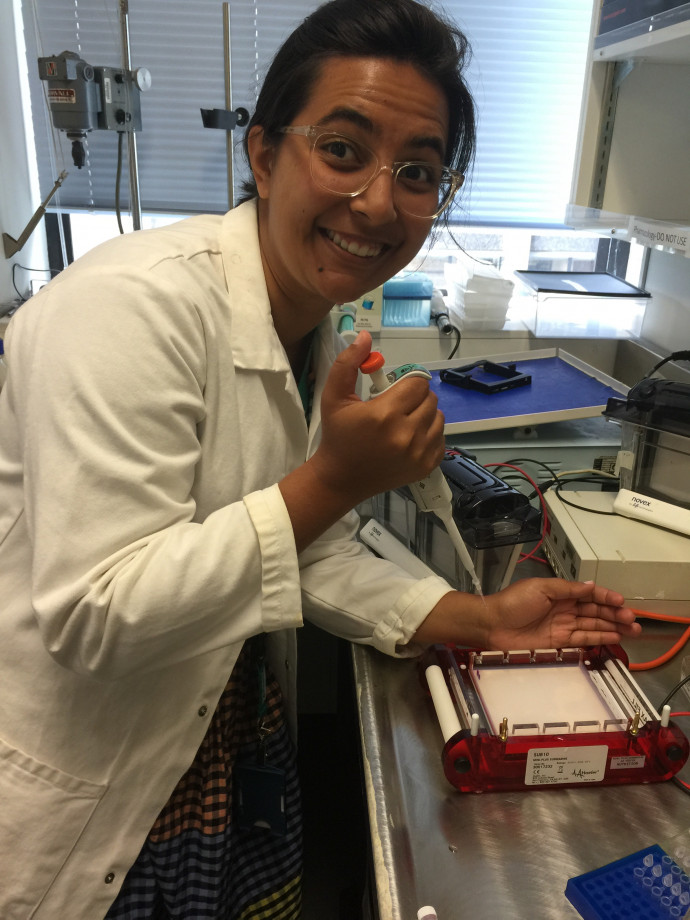St Mary’s College - Sherna Matta

2015 | The collaborative nature of science in cancer
School: St Mary’s College
Host: University of Auckland, Maurice Wilkins Centre
Region: Auckland
Sherna is a secondary school Science and Biology teacher with a background in Human Biology, particularly genetics, physiology and reproduction.
Sherna has learned about the Nature of Science in the context of cancer. Cancer is a disease with many phenotypes and permutations. First generation cancer therapies and treatments included surgery, chemotherapy and radiotherapy, which are generic procedures, are not necessarily focused on the root of the problem.
The laboratories in Sherna’s placement derive cell lines from clinics from which they produce immortal cell lines and model organisms. These are used to elucidate genetic codes and cancer pathways. Oncogenic proteins from the pathway are imaged so that compounds can be produced as potential drugs, specific to a type of cancer. Once the compounds are produced, they are tested on the cell lines and model organisms to determine whether they are able to kill the cancer. Drugs able to successfully kill cancers in cell lines and model organisms proceed to clinical trials, when the drugs are tested on humans. Cancer drugs, due to their toxic nature are tested on cancer patients, unlike other drugs, which are tested on healthy individuals. Most drugs produced do not make it to the shelves of a pharmacy. However, in science, the failures are also considered learning. Scientists learn what can be an effective drug, as well as what cannot be an effective drug.
In short, novel cancer therapies are targeted to the organ system or the cells that are cancerous. These involve a myriad of procedures including elucidating the affected cancerous pathway, finding an appropriate compound to block the pathway, and testing the drug from cells – to model organisms – to clinical trials. This is the science that occurs behind the clinical setting.
All clinical protocols or procedures have a scientific history. Natural phenomena are studied by scientists, to gain an understanding of the patterns of their occurrences. Discoveries of the present and future are dependent on the knowledge of discoveries from the past.
Sherna has learned that the scientific method is robust and non-linear, yet open to changing with new discoveries. Scientists are multi-disciplinary and make contributions via their testing to all facets of everyone’s everyday life.
The Science Teaching Leadership Programme has enabled Sherna to find how her school’s science programme ties to the real world – or to put it more simply, answers to the question ‘why are we learning this?’! She has also gained an appreciation for the fact that a science pathway is far from esoteric, which is often a general perception.
